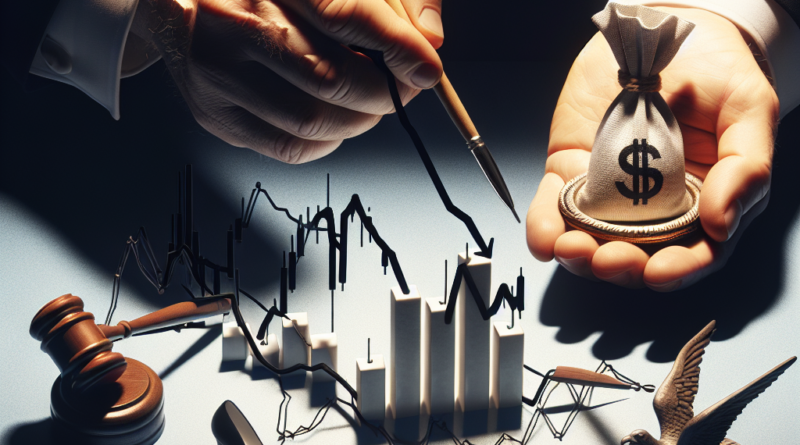Bonds or Stocks? One of These Markets is on the Verge of Collapse
Is the Stock Market Heading for a Crash?
A possible collapse in either the stock market or the bond market seems to be looming, and the signal lies in the Treasury yield curve.
For over five decades, the Treasury yield curve has been an extraordinarily accurate recession forecasting tool.
U.S.
Treasury bonds are debt securities that pay a fixed interest rate (or yield) based on their maturity.
Longer-term Treasuries usually offer higher returns than short-term ones because investors expect to be compensated more when committing funds for longer periods.
For example, 10-year Treasuries typically yield higher returns than three-month Treasuries.
However, the yield curve inverts when short-term bonds pay more than long-term bonds.
Inversions often occur when economic uncertainty drives investors to buy long-term bonds.
This would be the signal that the bond market is sending: will the U.S.
face a recession that will drag down stocks? Let’s analyze.
Economic Outlook and Market Predictions
Experts have been debating for months whether the U.S.
economy was heading for trouble.
In October 2022, economists estimated a 63% probability of a recession within 12 months.
Inflation was over 8% at the time, and the Federal Reserve was raising interest rates at the fastest pace in decades.
But since then, the situation has changed drastically.
Inflation has now cooled down to the point that policymakers are expected to cut rates in September, and the economy has continued to expand.
U.S.
GDP grew at an annual rate of 2.8% in the second quarter, surpassing experts’ 2% growth forecast.
Economists now estimate a 28% probability of a recession within 12 months.
However, investors are not out of the woods yet.
Former New York Federal Reserve Bank President Dudley believes the economy is already sliding into a recession and that delaying rate cuts until September unnecessarily increases the risk.
Warning Signs from the Treasury Yield Curve
A market prediction tool from the bond market supports this conclusion.
The Treasury yield curve has predicted every recession since 1969 and is now sounding the alarm for a record-breaking 21 months.
If this warning proves accurate, a recession would almost certainly lead to a stock market crash.
Analysts emphasize that inversions between 10-year and three-month Treasury yields are particularly reliable in predicting recessions.
The yield curve has forecasted recessions since 1950 with only one “false” signal preceding the credit crisis and production slowdown in 1967, according to the New York Federal Reserve Bank.
Another crucial data point to consider is that the difference between the 10-year and three-month Treasury yields turned more than 1% negative in June 2024.
The last time this happened (excluding the current inversion) was in August 1981.
In other words, the bond market is warning of the most severe recession in decades.
Stock Market Insights
Economic recessions have historically been bad news for the stock market.
Knowing how to invest and which opportunities to seize in these contexts is crucial.
Money.it’s Technical Analysis course can be helpful.
The S&P 500 has declined by an average of 35% during recessions since 1969.
The index is currently trading 4% below its all-time high, implying a potential 31% decline if a recession were to start tomorrow, according to analysts’ calculations.
While alarming, the worst thing investors can do is trying to time the market by selling stocks now and buying back before a rebound as per experts’ advice.
No prediction tool is truly infallible, so the current yield curve inversion does not guarantee a recession or a stock market crash.
Furthermore, even if the stock market crashes, the S&P 500 has historically rebounded before the end of recessions.
“In every recession in the last 50 years, except for the tech collapse in the early 2000s, the S&P 500 started to rise towards highs before economic activity hit rock bottom,” according to JP Morgan strategist Elyse Ausenbaugh.




